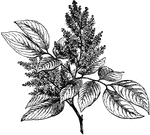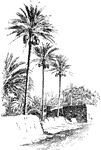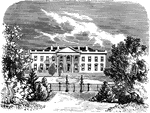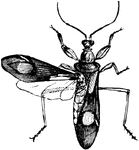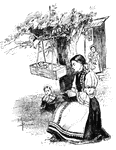
Russian Peasants
"There are trees here and there on each side of the roadway. Under one of them a woman is knitting,…
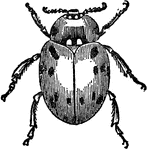
Ladybird
A class of small insects or beetles found commonly on plants and trees. They are noted for their various…
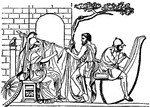
Building the Argo
"At that time the only species of navigation known to the Greeks consisted of small boats or canoes…
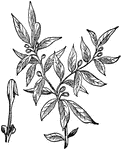
Laurel
A genus of plants ranging in size from a shrub to trees sixty feet in height. They are natives of southern…

Magnolia
A genus of ornamental shrubs and trees, native to North America, China, India, Japan, and other portions…
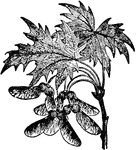
Maple
A class of trees belonging to the genus acer, containing about eighty species, all of which are confined…

Mulberry
A genus of trees native to tropical and temperate climates, and extensively cultivated on account of…

Nutmeg
The kernel of the fruit of various trees, especially that of the nutmeg tree. The fruit is an edible…

Oak
A genus of trees and shrubs widely distributed in the temperate zones of all the continents, but most…

Tree Design
Sometimes called the tree of life. Always associated with religious belief. It symbolizes Divine power…
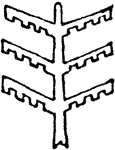
Tree Design
Sometimes called the tree of life. Always associated with religious belief. It symbolizes Divine power…
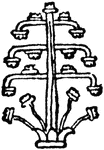
Tree Design
Sometimes called the tree of life. Always associated with religious belief. It symbolizes Divine power…
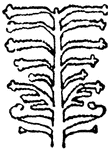
Tree Design
Sometimes called the tree of life. Always associated with religious belief. It symbolizes Divine power…
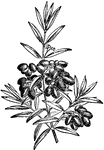
Olive
A genus of evergreen trees and shrubs found in the warmer regions of temperate climates. They attain…

Orange
A class of fruit trees of the citrus genus, including several species. They are native to China, India,…
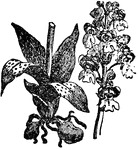
Orchids
A class of herbaceous plants or shrubs, including about 2,000 species, and generally distributed throughout…
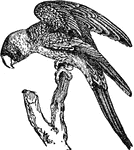
Parrot
A genus of tropical birds classes with the climbers. The genus includes many beautiful species, most…
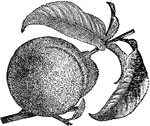
Peach
A class of fruit trees including many varieties, and cultivated in all the countries having a warm or…

Peacock
A class of beautiful birds of the pheasant family, native to southeastern Asia. In the wild state peacocks…

Plum
A class of fruit trees belonging to the same genus as the apricot, almond, peach, and cherry, and cultivated…
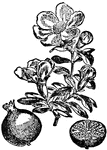
Pomegranate
A class of trees of the myrtle family. They are native to Palestine and the Mediterranean region, but…
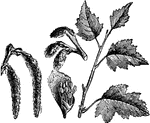
Poplar
A genus of deciduous trees, widely distributed in the north temperate zone, particularly in the temperate…

Quassia
A genus in the family Simaroubaceae. Its size is disputed; some botanists treat it as consisting of…

Cinchona
Cinchona is a genus of about 40 species in the family Rubiaceae, native to tropical South America. They…
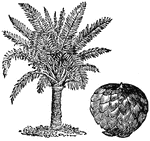
Sago
An article of food obtained from the inner portion of the bark of several species of palm trees. The…

Sequoia
The name of a genus of gigantic trees of the pine family, nearly allied to the bald cypress of the southeastern…
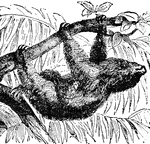
Sloth
A genus of mammals belonging to the bear family. They are native to Central and South America. These…

Sumac
A genus of trees and shrubs, which includes about fifteen species native to the United States.

Sycamore
The name applied to a species of maple trees. It occurs in abundance in the western states, and is frequently…
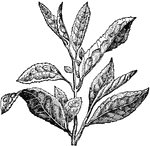
Tea
A genus of shrubs and trees allied to the camellia. They include varieties that vary in height from…

Termites
A class of insects confined chiefly to the tropics. They resemble in their mode of life the true ants,…
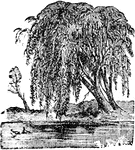
Willow
A class of shrubs or trees of the genus salix, varying in size from shrubs of only a few inches in height…
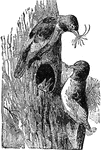
Woodpecker
A genus of birds belonging to the climbers, and so called from their habit of pecking into trees in…

Aralia
A genus of the plant family Araliaceae, consisting of about 30 species of deciduous and evergreen trees…
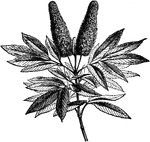
Cunonia
A small genus of plants. They are small trees or shrubs with compound leaves and dense racemes of small…

Girdling Tree
This illustration shows the different methods of girdling trees: a, back girdled; b, girdled to heartwood;…
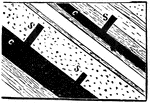
Coal Beds
This illustration shows coal-beds with stumps of trees rising out of the coal. The stumps always stand…
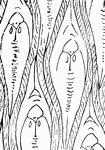
Lepidodendrids
One of the most abundant of Caboniferous forest trees, especially in the earlier half of the Carboniferous…

Pomona
The Roman divinity of the fruit of trees. She was beloved by several of the rustic divinities, as Sylvanus,…

Black Throated Green Warbler
A small bird usually 4 to 6 inches in length with endless varied in coloration, migratory, insectivorous,…
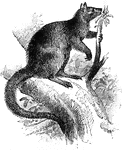
Tree Kangaroo
They are adapted for arboreal life, having the tail less robust tan that of the ground kangaroos, and…
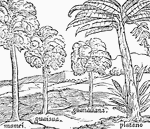
Hispaniola Trees
Trees of Hispaniola during Columbus' exploration. Trees such as "Mamei, Guaiana, Guanauana, and Platano."

Ivy
The common ivy is a wellknown native of Britian and most parts of Europe and some parts of America.…

Tortricina
"The Tortricina include a great number of small moths exceedingly injurious to orchard and other trees.…

Helix Descrtorun
"Many species hibernate. The land-snails bury themselves in the ground, or conceal themselves under…
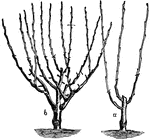
Dwarf-Tree Pruning
"This image gives a good idea of how these drawf trees are to be manipulated, a showing the first year's…
Pruning
"The nature of the cut itself in pruning is of more consequence, especially in the case of fruit trees,…

Pruning
"The nature of the cut itself in pruning is of more consequence, especially in the case of fruit trees,…
Pruning
"The nature of the cut itself in pruning is of more consequence, especially in the case of fruit trees,…
Pruning
"The nature of the cut itself in pruning is of more consequence, especially in the case of fruit trees,…
Pruning
"The nature of the cut itself in pruning is of more consequence, especially in the case of fruit trees,…
Pruning
"The nature of the cut itself in pruning is of more consequence, especially in the case of fruit trees,…
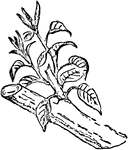
Summer Pruning
"Summer Pruning should be performed while the shoots are yet young and succulent, so that they may be…
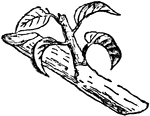
Summer Pruning
"Summer Pruning should be performed while the shoots are yet young and succulent, so that they may be…
